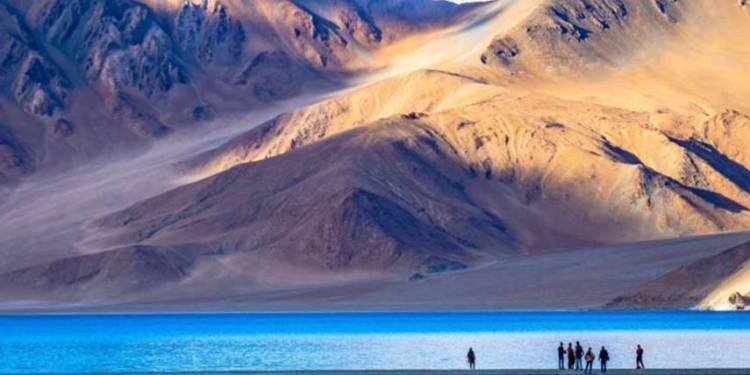Days after a violent face-off resulted in bloodshed in the Galwan Valley area of Eastern Ladakh, the situation remains tense on the effective Sino-India border in Ladakh. There are no signs of de-escalation and the focus now shifts 200 kilometres South of the Galwan Valley area where the violent face-off unfolded on Monday.
The latest site of military confrontation between India and China is the Pangong Tso lake- the same spot from where the ongoing military tensions originated between New Delhi and Beijing.
A violent face-off had happened in the Finger 5 area of the Pangong Tso Lake last month that had resulted in injuries to troops on both sides. With the passage of time, the focus shifted to the Galwan Valley area after China objected to India’s functional plans to connect the strategically crucial Shyok-Daulat Beg Oldi road with border posts.
The bloodshed on Monday might have brought the Galwan Valley in the spotlight, but a fresh challenge is coming India’s way in the Pangong Tso area.
According to ET, the ground situation in Pangong Tso has taken a serious turn over the past six weeks, as the People’s Liberation Army (PLA) of China has built seemingly permanent defences that will be hard to demolish if and when a dialogue is initiated to disengage in this part of Eastern Ladakh.
Tensions in the Pangong Tso area pre-date the ongoing military stand-off, unlike the Galwan Valley area. There are no perception differences in the Galwan Valley area as the Chinese claim line corresponds to the Line of Actual Control (LAC), and it is a different matter that now Beijing has started claiming sovereignty over the entire Galwan Valley area.
There are however differing perceptions of the LAC in the Pangong Tso lake area, which makes it even more susceptible to frequent tensions and face-offs. India claims that the LAC is coterminous to Finger 8, but physically controlled area only upto Finger 4. Patrols to Finger 8 though were undertaken before the ongoing stand-off.
Beijing on the other hand has a totally different perception of the LAC here and claims that the LAC passes through Finger 2. Differing perceptions lead to frequent face-offs as patrols from the two sides often come into contact with each other. Six years ago, China had attempted a permanent construction in Finger 4 that was demolished by India.
Now, ET has reported that both satellite images and ground reports reveal that Chinese troops have occupied areas right upto Finger 4. This is well within the Indian perception of the LAC, and the PLA troops are occupying area 5 kilometres inside New Delhi’s LAC perception.
What is even more worrying is the Chinese construction overdrive- a marina like structure has been built by China near the lake with hardened defences along the ridgeline.
The entire construction has been carried out ever since the ongoing military stand-off started on May 5, and the ET has also reported that China is occupying dominating heights near Finger 4. This is a Kargil war-like situation in its own right.
An image tweeted by India Today journalist Shiv Aroor illustrates this position accurately. The People’s Liberation Army has built defences on the ridgeline that overlook the entire area. These defences are situated just 490 metres away from Indian positions and look over them in the barren mountains of the region from a clear vantage point.
Also, ET has reported that a series of bunkers have been created on the ridgeline along Finger 4, which gives the PLA a potential firing range over the Indian positions in the area.
Let me say this again. The true territory story is shaping up at Pangong Tso. China is creating a new line here. And is *490 meters* away from Indian positions. https://t.co/gup4rYQvoT pic.twitter.com/fEUY3zF3ww
— Shiv Aroor (@ShivAroor) June 19, 2020
Moreover, India’s access to the area beyond Finger 4, which forms a part of India’s effective territory upto the LAC has been blocked for all practical purposes. The latest images show that the beach area near the Pangong Tso lake has been now converted into a marina by Beijing.
Boatsheds and administrative camps have come up on the beach along the Pangong Tso lake- which is the traditional route used by the Indian Army troops for patrolling beyond Finger 4. However, India’s access to the beach along the lake stands blocked by at least two fortified structures. Moreover, the PLA has also constructed a metalled road.
The true story is shaping up in Pangong Tso Lake, and India will have to be firm in the face of Chinese belligerence. The Dragon is behaving like a rogue, medieval force as we witnessed during the brutal face-off on Monday. India needs to be alert and more importantly aggressive in Pangong Tso, thus nipping Chinese aggression in its bud.































